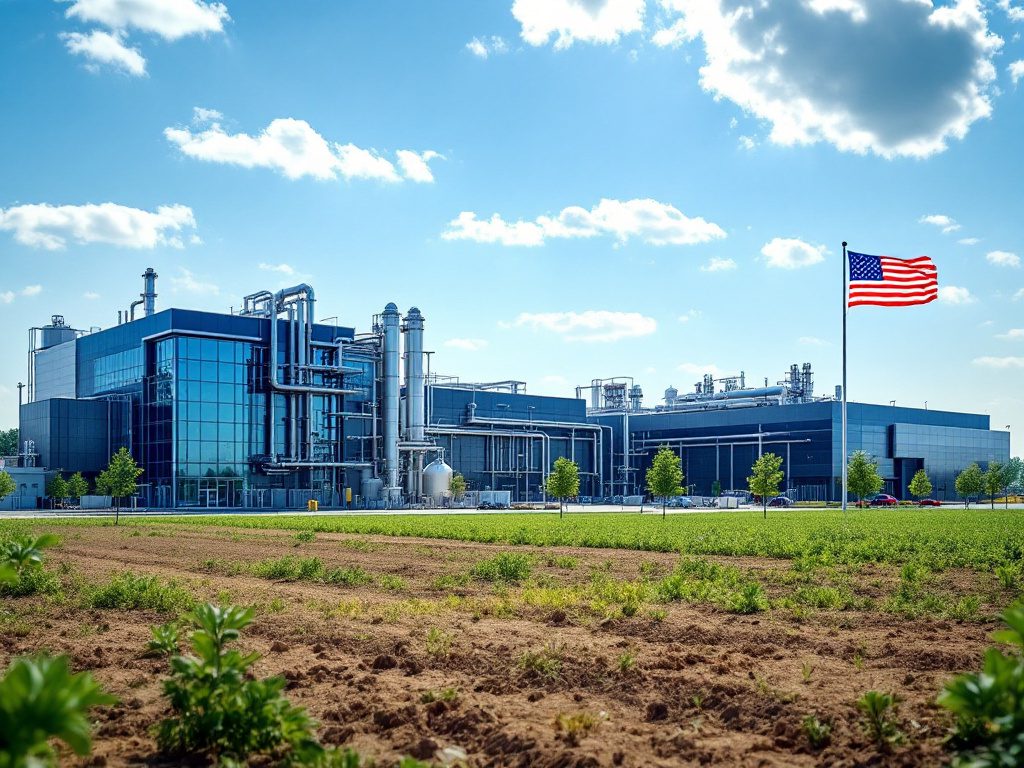The New Face of American Drug Manufacturing
Crimson steel girders rose skyward in Wilmington, Delaware this spring—a striking symbol of where America’s pharmaceutical future is being built. Under the watchful eyes of state officials and Merck executives, ground was broken on a $1 billion investment: a 470,000-square-foot “center of excellence” that will soon serve as the new U.S. home for cancer wonder-drug Keytruda and next-generation biologics. Politicians hailed job creation. National media spotlighted an industrial renaissance. But behind the celebratory fanfare lies a profound question: does Merck’s massive bet on U.S. manufacturing reflect genuine industrial renewal, or a reluctant adaptation to the blunt force of Trump-era tariffs and pharmaceutical protectionism?
The Wilmington facility represents Merck’s first in-house site dedicated to producing Keytruda—the world’s best-selling cancer immunotherapy—specifically for American patients. This alone marks an industrial milestone, as Keytruda is expected to command tens of billions in sales over the coming years. Yet, as Harvard health economist Dr. Karen M. Freund notes, “Federal policies that incentivize or penalize where drugs are made ultimately shape every decision in this sector—even decisions masked as innovation or patriotism.”
Tariffs, Tax Incentives, and Political Stagecraft
For years, pharmaceutical supply chains have stretched across continents—driven by profit margins and strategic outsourcing. That math began to change with the 2017 Tax Cuts and Jobs Act and was upended by the Trump administration’s aggressive push for domestic industry. Duties on imported medical ingredients, combined with open threats of further tariffs on finished drugs, sent boardrooms scrambling. Merck’s CEO Robert Davis described the company’s Delaware expansion as proof of “commitment to U.S. investment.” The underlying motive, of course, is layered by far more than corporate goodwill.
Federal pressure became unmistakable: Drug giants now face not only tariff penalties but public pillorying if seen as ‘offshoring’ American jobs. Merck’s $1 billion Delaware project will anchor production within the United States, creating more than 500 full-time positions and an astounding 4,000 construction jobs before the doors even open—production slated to begin by 2028. That headline-grabbing growth is attached to a deal that includes over $30 million in taxpayer-backed Delaware state grants, with a twenty-year lease at the Chestnut Run Innovation & Science Park beginning in early 2025. The numbers are bold. The politics, even bolder.
But will these jobs last? The record is mixed. As labor economist Elaine Bernard of Harvard Law School reminds us, “Mega-facility announcements often come with generous projections. Keeping jobs long-term, ensuring safe working conditions, and sustaining wages require vigilance, not just press releases.”
“Behind every ribbon-cutting, there’s a labyrinth of corporate calculations shaped by tax incentives, tariffs, and a restless political climate—not always the best interests of communities, patients, or workers.”
Biotech Opportunity or Quasi-Protectionism?
Anchoring such a facility in Delaware is no accident. Proximity to prestigious universities in Delaware and Pennsylvania was a major factor, allowing Merck to recruit fresh graduates as it seeks to fuel biotech R&D and production. State economic officials tout a vision of Wilmington emerging as a biopharma talent hub rivaling Cambridge, San Diego, or the Research Triangle. When companies like Merck invest, it’s not just a numbers game—it’s a wager on human capital and community infrastructure.
Yet the larger context can’t be ignored. Merck expects the new plant to handle not just Keytruda but also antibody-drug conjugates and investigational compounds by 2030. This expansion hints at a response to future pipeline needs and a strategic buffer against global supply disruptions, as emphasized by MIT’s Lydie Louis, who studies biotech supply chain resilience. “COVID-19 showed the world how fragile our medicine pipelines are. Onshoring is about more than jobs—it’s about sovereign control and public health stability.”
But the enthusiastic applause over “onshoring” has a flip side. While federal policies claim to protect American jobs and patients, they also risk hobbling global cooperation, driving up consumer prices, and fueling a zero-sum race for corporate loyalty. Pew Research data reveal that drug prices in the U.S. already far exceed those in comparable high-income countries—a burden most acutely felt by older and lower-income Americans. If production costs rise further due to tariffs and isolationist policies, can we truly call this progress?
Can Progressive Policy Shape the Next Chapter?
It’s tempting for commentators and conservative politicians alike to frame this moment as proof that their policies work: slap on tariffs, offer a few tax breaks, and watch manufacturing jobs return like swallows in spring. Reality doesn’t conform so easily. Genuine innovation and supply resilience require smart, targeted investments in infrastructure, education, and incentives for responsible growth—not just corporate handouts or blunt trade wars.
The long-term success of Merck’s Delaware plant, and the progressive promise it represents, will depend on how the wealth and opportunity it creates are shared. Will local workers receive living wages? Will training programs diversify biotech’s professional ranks, opening doors for historically marginalized groups? Will pharmaceutical giants uphold commitments to affordable access, or will protectionist instincts simply pad profits at the expense of public health?
History offers both encouragement and warning. Postwar investments in public labs and education seeded decades of American medical breakthroughs. Only by pairing corporate ambition with public-minded policy can we avoid repeating the hollow booms of yesteryear, when tax breaks meant windfalls for shareholders—not neighbors.
The Wilmington site stands as a crossroads. The world’s need for game-changing medicines leaps higher every year. But so does the need for an industrial policy informed by social justice, not just quarterly returns. Delaware’s new glass-and-steel campus deserves more than political theater. It deserves vigilance, vision, and a progressive insistence that when a billion dollars buys a new future, it line up with the values of community, equity, and shared prosperity.

